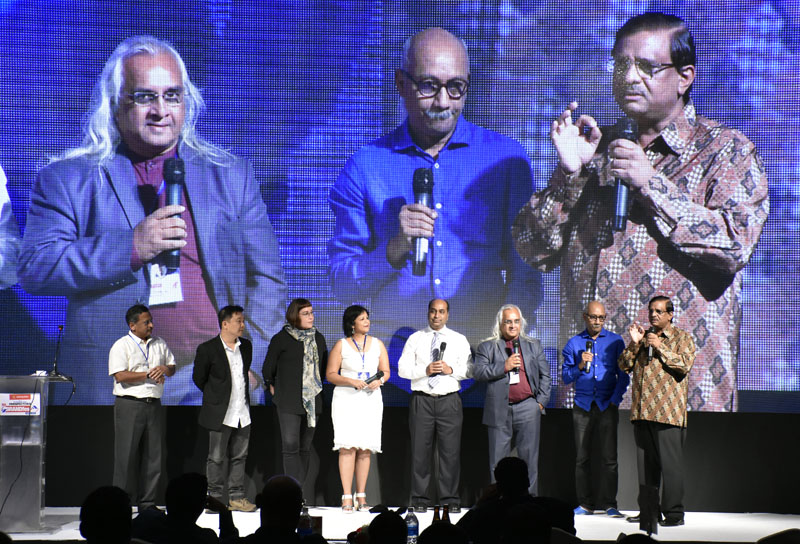Creating experiences, connecting with people
Kathmandu, August 6
In April, a group of kids in Washington DC boarded an ordinary glossy-yellow school bus.
As the bus drove through the city, the kids started chatting and giggling. Then suddenly they started staring at the window of the bus with a look of astonishment. Outside, the city was turning dusty, and big red rocks were emerging.
These kids, in fact, had just entered Mars.
Nobody has landed on the red planet till date. But these children made it, thanks to Lockheed Martin, a US-based global security and aerospace company, which has launched an educational programme called Generation Beyond that includes Mars Experience Bus.
The Mars Experience Bus was built with software used in today’s most advanced video games. Inside the bus, the windows turn into screens, and immersive virtual reality technology blends with the replica of 200 square miles of the Martian surface created by Lockheed, making riders feel they are travelling on Mars for real.
No wonder, children were smiling, pointing at things outside the window and enjoying the moment as the bus rolled.
“This is called branding — creating experiences and connecting with people in a meaningful way,” Carla Enslin, national academic head of South Africa-based Vega School of Brand Leadership, told the second and last day of 3rd BrandFest Nepal 2016 today.
The compliment may be job done for Lockheed, which designed the project — a national Science, Technology, Engineering and Math (STEM) educational programme — to ‘encourage young people to explore STEM fields in a hands-on way that will stay with them for a lifetime’.
Generally, brands are constrained to commercial contexts, which, according to Enslin, should not be the case.
“If a person wishes, he or she can exist as a brand. Even cities, countries, social movements and political parties can emerge brands,” Enslin said. But many do not grasp this concept. Perhaps, this is because they lack understanding of the notion called branding.
In Enslin’s words, brand is ‘literally a construct, or an idea, that wishes to convey a very specific and unique meaning to build relationships and generate awareness’.
But again this is not an easy job. “This is because the brand embraces the entire value chain.... from how the organisation goes about sourcing raw materials to production processes, logistics, distribution mechanism and communications strategies. So, one can’t manage a radar screen that is sliced into segments and be concerned with only communications dimension of the brand,” Enslin said.
Yet she acknowledged ‘communications dimension certainly promises and presents a particular identity’. “But truth ultimately lies in the experience of the brand,” Enslin said.
“And (to create that experience) a brand strategist gets only two seconds.”
It is said the attention span of human beings, in this digital age, lasts only eight seconds. “I can get the remaining six seconds if I can connect with you in a meaningful way in the first two seconds,” she said. “So, every touchpoint will either reinforce or cause erosion to promises made by a brand.” Sumit Roy, founder director of Univbrands-India, thus, called on brand strategists to focus on brand purpose rather than product sales. “You do not always need a big budget to do this,” he said.






